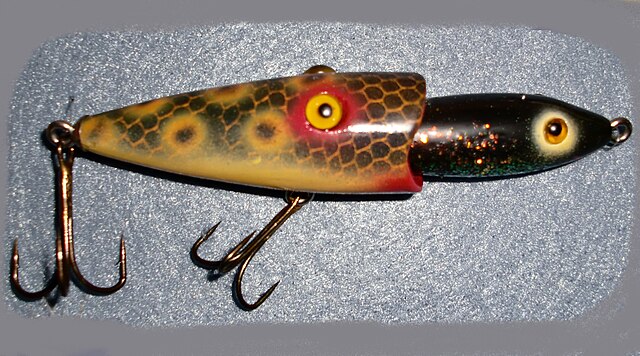An artificial fly or fly lure is a type of fishing lure, usually used in the sport of fly fishing. In general, artificial flies are an imitation of aquatic insects that are natural food of the target fish species the fly fishers try to catch. Artificial flies are constructed by fly tying, in which furs, feathers, thread or any of very many other materials are tied onto a fish hook.
Classic 19th-century artificial fly – The Triumph
First known illustration of a fishing fly from 4th. edition (1652) of John Dennys's The Secrets of Angling, first published in 1613, probably the earliest poetical English treatise on Angling.,
Frontispiece from Bowlker's Art of Angling (1854) showing a variety of artificial flies
Illustration of a large Pike fly (1865)
A fishing lure is any one of a broad category of artificial angling baits that are inedible replicas designed to mimic prey animals that attract the attention of predatory fish, typically via appearances, flashy colors, bright reflections, movements, vibrations and/or loud noises which appeal to the fish's predation instinct and entice it into gulping the lure. Angling activities using lures are known as lure fishing.
Fishing lures are made in various creative designs like this top-water lure
Attaching a bass fishing lure to a fishing line
A copper fishing lure
A collection of "popper" lures, a type of surface lure








